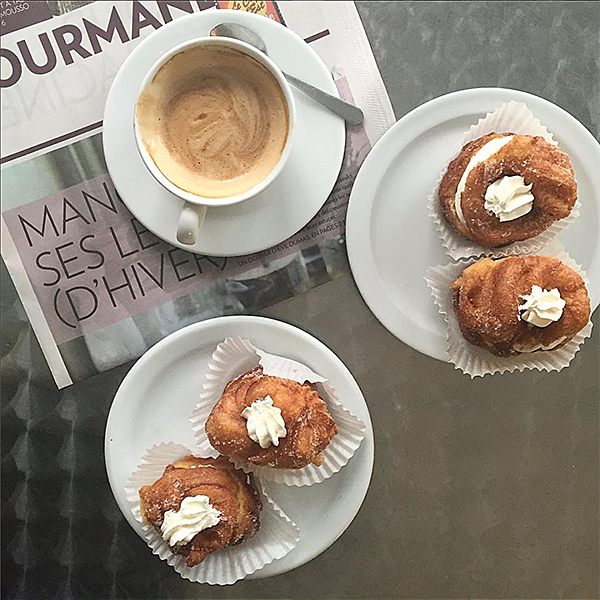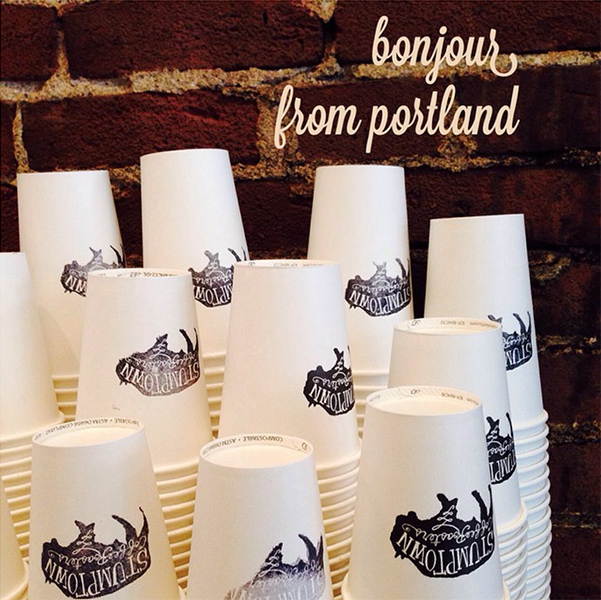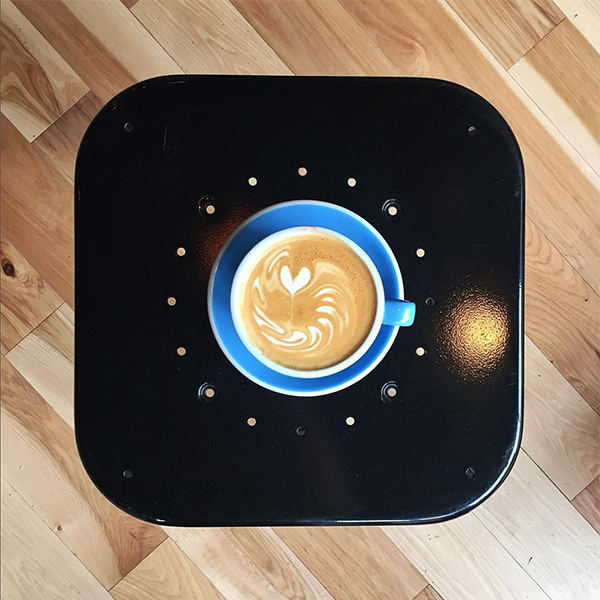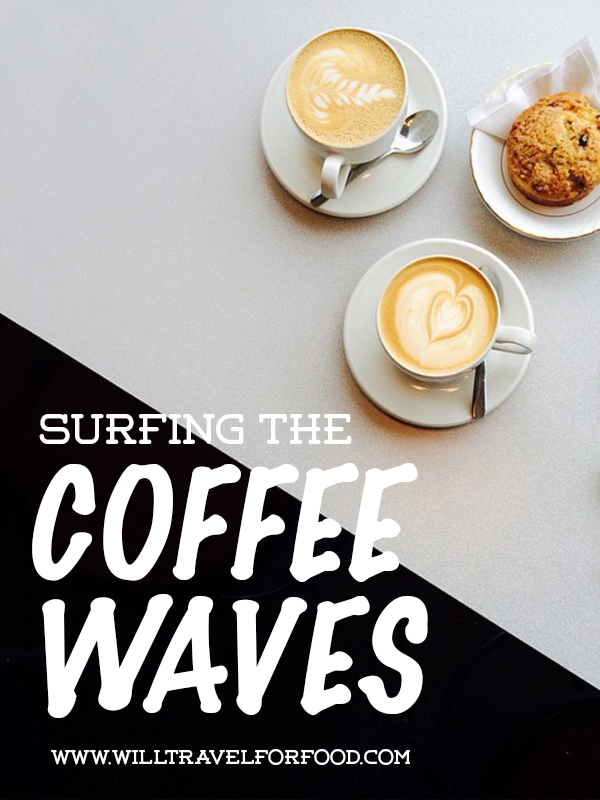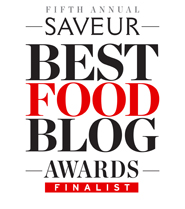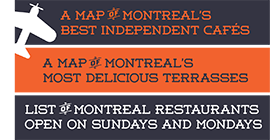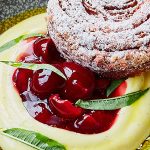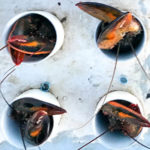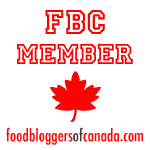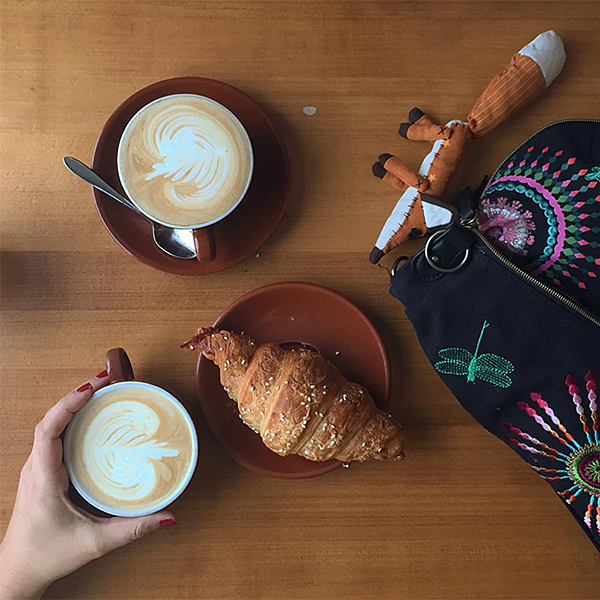
At Montreal’s Café Larue, the beans are a darker roast but the coffee is made with care just like a third wave one
I remember when Brûlerie Saint-Denis was the hippest café in Montreal. I remember the opening of the first Second Cup and how exciting that was! I also clearly recall my first time at Caffè Italia years ago and how delicious that latte was. I never wanted any other kind after that experience. For the longest time, the only independent café in town was Café In Gamba. It was then followed by Café Saint-Henri and Café Myriade, the predecessors of the third wave movement in Montreal. It now seems like there’s a coffee shop with its own distinguishing features and independent spirit on every corner of every street.
But what exactly is this third wave movement we keep hearing about? Below is my attempt at explaining the three waves of coffee culture in very simple terms, without getting into technicalities and precedents.
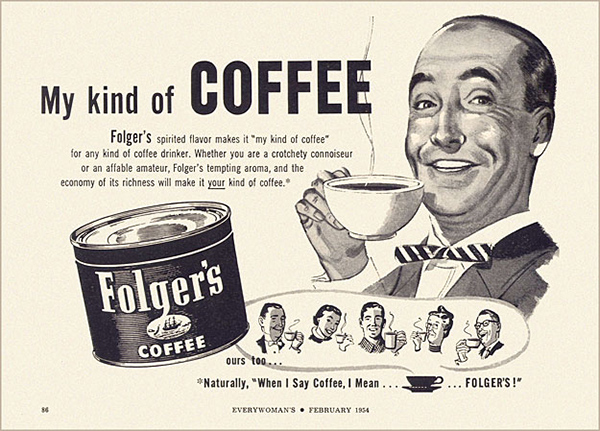
A vintage ad for Folgers coffee {photo alsis35 under CC BY-NC 2.0}
First wave
The first wave of coffee culture is that instant coffee we all love to hate. There was a time when “the best part of waking up was Flogers in your cup”. Indeed, instant coffee brands like Folgers became popular in the 19th century with Nescafé following suit in the 30s. They entered American homes and became an essential part of morning routines everywhere. I started drinking coffee in my mid-teens and drank Nescafé for years, because that’s just what you drank in Lebanon if you couldn’t stomach a strong cup of Turkish coffee for breakfast. To this day, one fifth of the 30,000 cups of coffee served each second around the world are cups of Nescafé (source: Forbes).
Second wave
The second wave is the one initiated in the 1960s by Peet’s Coffee & Tea in California, followed closely by Starbucks in Seattle. Despite being shunned by coffee connoisseurs today, we owe a lot to these two chains, which initiated the “specialty coffee” movement and mainstreamed espresso-based drinks. When the new coffee scene emerged in Seattle in the 70s and 80s, it involved sourcing and roasting beans in-house, a brand new concept for that time. Nowadays, these companies have become huge corporations but they are trying to go back to their original concepts and create cafés that ressemble independent ones in order to attract today’s more discriminating clientele.
::::::::::::::::::::::::::::::::::::::::::::::::::::::::::::::::::::::::::::::::::::::::::::::::::::::::::::::::::::::::::::::::::::::::::::::::::::::::::::::::::::::::::::::::::::::
Note: Italian espresso bars stand somewhere in between the first and second wave of coffee culture. They’ve been around for years and started out by catering to a crowd of immigrants (Italian, Portuguese, etc.) then became increasingly frequented by local crowds and hipsters looking for an authentic old world taste and feel. In Montreal, these caffès include Café Olimpico, Café Ferlucci, La Cornetteria and more. They haven’t changed much for the past 50 years and still serve no-nonsense, espresso based drinks. Years ago, I witnessed an old barista at Caffè Italia yell at a tourist in Italian, before proceeding to kicking her out of the café. Her crime? Ordering a “regular” (read: filter) coffee. “Espresso, cappuccino, caffe latte, basta! Mah!”
::::::::::::::::::::::::::::::::::::::::::::::::::::::::::::::::::::::::::::::::::::::::::::::::::::::::::::::::::::::::::::::::::::::::::::::::::::::::::::::::::::::::::::::::::::::
Third wave
We are currently in the third wave of coffee culture, where coffee is considered an artisanal food product, just like wine or fine chocolate. Chicago’s Intelligentsia Coffee and Portland’s Stumptown Coffee Roasters are some of the companies that ushered this change in coffee culture. With Durham, North Carolina’s Counter Culture Coffee, they remain to this day the three biggest players in the third wave coffee movement.
What distinguishes this wave is a closer relationship between coffee growers in developing countries and the traders, roasters and cafés who use their beans. Single origin or single plantation beans as opposed to blends are now carefully sourced from farmers (or co-ops) under direct and/or fair trade circumstances, which in turn allows the producers to improve the growing process.
A second characteristic of third wave coffee is roasting in small batches (or microroasting) to preserve the beans’ freshness. The roasting is also lighter (as opposed to the dark roast of Italian espresso beans) allowing the subtleties and uniqueness of the beans’ terroir to come through. Third wave coffee beans tend to taste more acidic and fruity when compared to the bitter, darker roasts of Italian-style beans.
Another characteristic is the minutia that goes into creating the perfect cup of third wave coffee: start every cup by grinding fresh beans delivered by your microroaster into the precise ground size. Proceed by weighing an exact amount of coffee grounds to place in the handle. Tamper with the specific amount of pressure. Clean the handle. Time the espresso’s extraction and stop the machine at the right second. Meanwhile, start frothing your milk while carefully watching its temperature. Become a master of the microfoam that will pair with the delicate aromas of these lighter roasts. The third wave movement is what brought about the latte art that we know and love today and which is not possible without obtaining the right texture from both the espresso crema and the microfoam. Any infinitesimal change to any of these steps above–or to the surrounding atmospheric conditions–will result in a completely different tasting coffee. Each bag of beans will require specific temperatures and/or times to bring out its best features. Brewing methods require a separate set of skills. It’s a science but also an art and that’s partly the reason why baristas today have been elevated to star status.
Third wave cafés have also revived and improved old-school brewing methods. They brought back the filter coffee by improving on it and allowing for the preparation of single or several cups by using the pour over method with a single cup V60 cone or in a Chemex for larger quantities. Everything that goes into making the perfect cup of pour over is as precise as described above for the espresso process. Third wave brought about a slew of brewing methods including
This is obviously just a broad overview of what third wave coffee is. One can write an entire dissertation on it but I will spare you the long read. However, I am more than willing to answer questions so if you’d like to know more, leave me a comment below.
On the Montreal coffee trail
It seems like lately, new cafés are opening in Montreal on a weekly basis. I make it a point to try all of them as soon as possible in order to add them to my map of independent cafés. I have colour coded the map for easier use: blue for third wave cafés, red for Italian bars that use a darker roast and purple for coffee shops that use Italian beans (dark roast) but a more soigné approach to frothing and presentation than your old-school Italian café. If you click on any point on the map, you’ll get a little description of the place. Please note that this map is constantly being updated.


